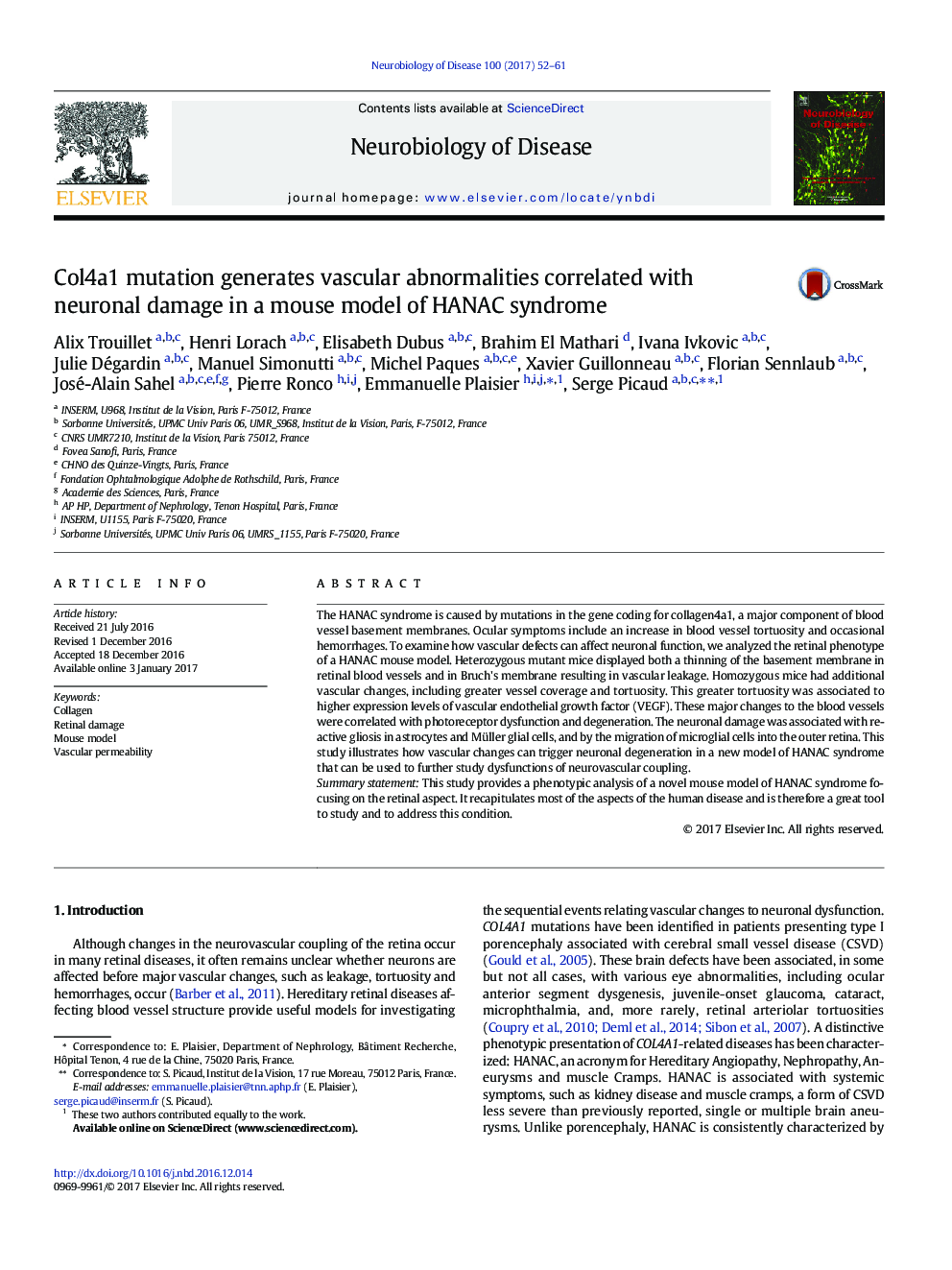| Article ID | Journal | Published Year | Pages | File Type |
|---|---|---|---|---|
| 5630665 | Neurobiology of Disease | 2017 | 10 Pages |
â¢We develop and characterize the visual phenotype of a mouse model of HANAC syndrome.â¢It mimics the human pathology in particular vessel tortuosity and vascular leakage.â¢Neuronal dysfunction associated with these vascular abnormalities is characterized.â¢This model is well suited to investigate the neurovascular coupling in HANAC syndrome.
The HANAC syndrome is caused by mutations in the gene coding for collagen4a1, a major component of blood vessel basement membranes. Ocular symptoms include an increase in blood vessel tortuosity and occasional hemorrhages. To examine how vascular defects can affect neuronal function, we analyzed the retinal phenotype of a HANAC mouse model. Heterozygous mutant mice displayed both a thinning of the basement membrane in retinal blood vessels and in Bruch's membrane resulting in vascular leakage. Homozygous mice had additional vascular changes, including greater vessel coverage and tortuosity. This greater tortuosity was associated to higher expression levels of vascular endothelial growth factor (VEGF). These major changes to the blood vessels were correlated with photoreceptor dysfunction and degeneration. The neuronal damage was associated with reactive gliosis in astrocytes and Müller glial cells, and by the migration of microglial cells into the outer retina. This study illustrates how vascular changes can trigger neuronal degeneration in a new model of HANAC syndrome that can be used to further study dysfunctions of neurovascular coupling.Summary statementThis study provides a phenotypic analysis of a novel mouse model of HANAC syndrome focusing on the retinal aspect. It recapitulates most of the aspects of the human disease and is therefore a great tool to study and to address this condition.
